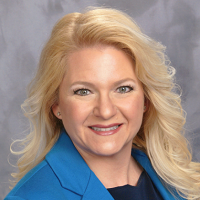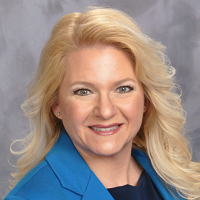Do You Know How Much You've Saved in Your 401(k)?
And are you sure you're enrolled in one? A surprising number of workers don't know where they stand with their company's retirement plan. Time to find out.


A major perk for many of us when deciding whether to work for an employer is their retirement savings program — or lack thereof. A 401(k) is a tax-advantaged retirement plan that allows employees to contribute a certain percentage of their paycheck into a subsequent individual account sponsored by their employer. With the end of the year approaching fast, now is a great time to check in on your retirement plan, specifically your 401(k).
A recent Retirement Security Survey conducted by Principal Financial Group found that around 6 in 10 respondents, or a stark 59%, wrongly believed they were contributing to a 401(k) retirement plan. The survey also suggests that a lack of understanding when it comes to eligibility requirements and enrollment is largely contributing to lower participation rates. Unfortunately, ignorance isn’t bliss when it comes to financially securing your future, and the following four steps can help you get started.
1. Review and understand eligibility requirements and check enrollment status
According to Principal’s survey, 22% of respondents said they weren’t sure if they were eligible to participate in their company’s retirement program. The report says some of this could be due to differing enrollment processes from previous jobs.
From just $107.88 $24.99 for Kiplinger Personal Finance
Become a smarter, better informed investor. Subscribe from just $107.88 $24.99, plus get up to 4 Special Issues

Sign up for Kiplinger’s Free Newsletters
Profit and prosper with the best of expert advice on investing, taxes, retirement, personal finance and more - straight to your e-mail.
Profit and prosper with the best of expert advice - straight to your e-mail.
For example, they may have been automatically enrolled in a retirement plan from a former employer — assuming that’s how every plan works. Requirements for various plans can be hard to understand, so consult with your human resources department if you have questions.
2. Know how much you should contribute
Once you’re enrolled, you’ll need to decide how much you should contribute to this retirement account each pay cycle. If you’re lucky enough to receive an employer match, know up to what percentage they match and contribute that amount if you can.
A financial adviser can help you determine an amount that suits your individual needs. (To find out the contribution limits for 401(k)s, see the article Higher IRA and 401(k) Contribution Limits for 2024.)
3. Check your balance
This might be less important for younger workers, but as you get closer to retirement, it’s important to review your balance quarterly. Not knowing your balance can make it hard to know whether you’re on track to meet your retirement goals. The last thing you want is to misjudge your ability to afford retirement, potentially forcing you to work longer than originally planned, or return to work after reaching retirement.
Similarly, if you’re younger, it’s a good idea to know how much you’ve saved each year. This is a great benchmark for kickstarting your retirement plan — helping you understand the rate at which you’re saving.
From there, you can explore other retirement savings vehicles to help you reach your goals. (To find out how your balance compares to others’, see the article The Average 401(k) Balance by Age.)
4. Set a savings goal
If you’re contributing to a 401(k), you should be setting a savings goal. Without one, you may be saving erratically. A financial professional can review your specific plan in comparison to your paycheck to help you determine the appropriate amount to contribute each pay period.
We spend a sizable amount of our lives working — not only to be able to afford the cost of living today but, hopefully, to enjoy some much-deserved freedom in our retirement years. Now is a good time to review your plan, or start creating one if you haven’t.
Cynthia Pruemm is an investment advisory representative of and provides advisory services through CoreCap Advisors, LLC. SIS Financial Group is a separate entity and not affiliated with CoreCap Advisors. The information provided here is not tax, investment or financial advice. You should consult with a licensed professional for advice concerning your specific situation.
Related Content
- Is a 401(k) Worth It? Here are the Pros and Cons
- Roth 401(k) vs. 401(k): Which Is Right for You?
- Using Your 401(k) to Delay Getting Social Security and Increase Payments
- 401(k) Plans: What You Need to Know Now
- Rolling Over a 401(k) into an IRA
Profit and prosper with the best of Kiplinger's advice on investing, taxes, retirement, personal finance and much more. Delivered daily. Enter your email in the box and click Sign Me Up.

Cynthia Pruemm, Founder and CEO of SIS Financial Group, specializes in financial planning, asset protection and transitional planning. Prior to starting SIS Financial Group, Cynthia served as State Director for two of America’s largest senior market agencies, where she also served as a member of the Chairmen’s Council and met her husband, Hagen. Because of their shared desire to help people during the next chapter in their lives, they founded SIS Financial Group.
-
 How to Avoid the Financial Quicksand of Early Retirement Losses
How to Avoid the Financial Quicksand of Early Retirement LossesSequence of returns — experiencing losses early on — can quickly deplete your savings, highlighting the need for strategies that prioritize income stability.
-
 How an Elder Law Attorney Can Help Protect Your Aging Parents
How an Elder Law Attorney Can Help Protect Your Aging ParentsIf you are worried about older family members or friends whose financial judgment is raising red flags, help is out there — from an elder law attorney.
-
 Q4 Post-Mortem From an Investment Adviser: Year of Resilience
Q4 Post-Mortem From an Investment Adviser: Year of ResilienceFinancial pro Prem Patel shares his take on how markets performed in the fourth quarter of 2025, with an eye toward what investors should keep in mind for 2026.
-
 This Is How Early Retirement Losses Can Dump You Into Financial Quicksand (Plus, Tips to Stay on Solid Ground)
This Is How Early Retirement Losses Can Dump You Into Financial Quicksand (Plus, Tips to Stay on Solid Ground)Sequence of returns — experiencing losses early on — can quickly deplete your savings, highlighting the need for strategies that prioritize income stability.
-
 How an Elder Law Attorney Can Help Protect Your Aging Parents From Financial Mistakes
How an Elder Law Attorney Can Help Protect Your Aging Parents From Financial MistakesIf you are worried about older family members or friends whose financial judgment is raising red flags, help is out there — from an elder law attorney.
-
 Q4 2025 Post-Mortem From an Investment Adviser: A Year of Resilience as Gold Shines and the U.S. Dollar Dives
Q4 2025 Post-Mortem From an Investment Adviser: A Year of Resilience as Gold Shines and the U.S. Dollar DivesFinancial pro Prem Patel shares his take on how markets performed in the fourth quarter of 2025, with an eye toward what investors should keep in mind for 2026.
-
 'Donroe Doctrine' Pumps Dow 594 Points: Stock Market Today
'Donroe Doctrine' Pumps Dow 594 Points: Stock Market TodayThe S&P 500 rallied but failed to turn the "Santa Claus Rally" indicator positive for 2026.
-
 Is Your Emergency Fund Running Low? Here's How to Bulk It Back Up
Is Your Emergency Fund Running Low? Here's How to Bulk It Back UpIf you're struggling right now, you're not alone. Here's how you can identify financial issues, implement a budget and prioritize rebuilding your emergency fund.
-
 An Expert Guide to How All-Assets Planning Offers a Better Retirement
An Expert Guide to How All-Assets Planning Offers a Better RetirementAn "all-asset" strategy would integrate housing wealth and annuities with traditional investments to generate more income and liquid savings for retirees.
-
 Forget FIRE: Why ‘FILE’ Is the Smarter Move for Child-Free DINKs
Forget FIRE: Why ‘FILE’ Is the Smarter Move for Child-Free DINKsHow shifting from "Retiring Early" to "Living Early" allows child-free adults to enjoy their wealth while they’re still young enough to use it.
-
 7 Tax Blunders to Avoid in Your First Year of Retirement, From a Seasoned Financial Planner
7 Tax Blunders to Avoid in Your First Year of Retirement, From a Seasoned Financial PlannerA business-as-usual approach to taxes in the first year of retirement can lead to silly trip-ups that erode your nest egg. Here are seven common goofs to avoid.